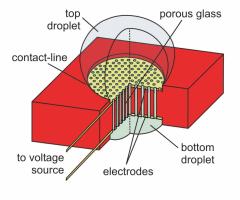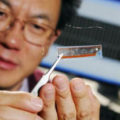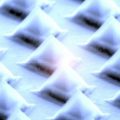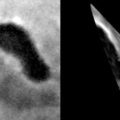
The Proceedings of the National Academy of Scienceshas reported on a tiny, fast switch that uses water droplets to create adhesive bonds almost as strong as aluminum.
Biomolecular engineer Paul Steen, of Cornell University, dreamed up the idea after listening to an entomologist’s lecture on palm beetles, which are native to the southeastern United States. When threatened, the palm beetle attaches itself securely to a leaf. The adhesion is achieved with tens-of-thousands of micron-sized droplets of secreted oil, each making a bridge-like contact between the beetle’s feet and the leaf. While the beetle controls the oil contacts mechanically, Steen’s switch uses water and electricity. The surface tension created by water droplets in contact with a surface provides an extremely strong bond, which can be switched on and off electrically.
The researchers aren’t entirely sure what the applications may be for the switch. It can work by itself on the scale of a micron, or, the switches can be combined in arrays for larger applications like super-strong adhesive bonding. Steen believes that applications for the new switch may take time to become apparent. But the switch’s simplicity, smallness and speed have enormous potential, he says. “This new technology bridges the gap between scales as large as our hands and nano-scales. We need devices that allow us to communicate between the two scales.”








Comments are closed.